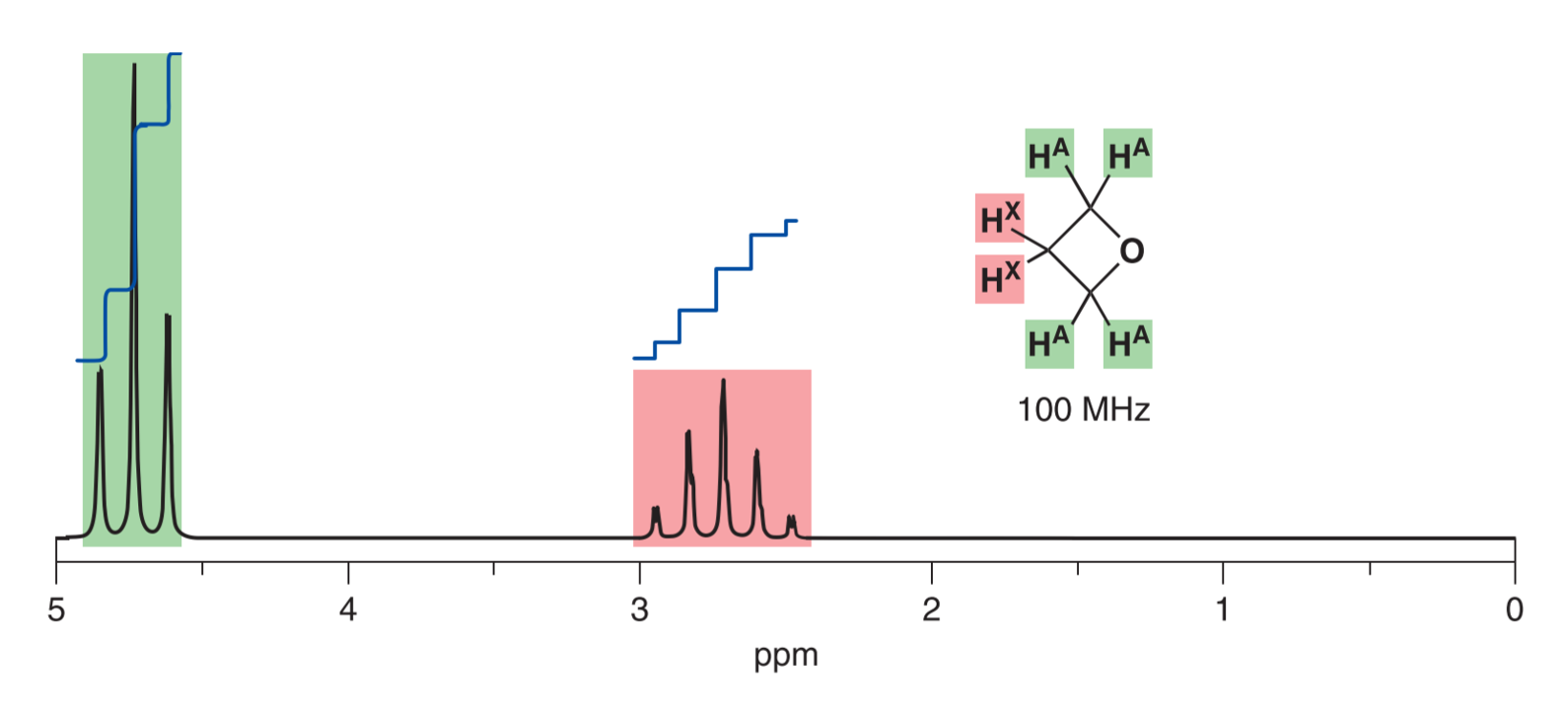Contents
Analysis
NMR-Spectroscopy
NMR-Spectroscopy (nuclear magnetic resonance) is a widely used and versatile analysis to predict the chemical structure of a sample. The method works by placing a sample in a strong magnetic field and exposed to radio waves with different frequencies. Some atomic nuclei will start to resonate as they interact with the radio waves of a certain frequency. The frequency at which the nuclei resonate in respect to the radio waves is determined by the chemical shift of the atom. The chemical shift describes the amount of shielding a nucleus experiences from its surrounding electrons. Nuclei that have a low electron density have a strong chemical shift and therefore resonate at higher frequencies. Thus they appear on the left hand side of the spectrum. The opposite is true for atoms with a weak chemical shift. If groups in a chemical substance have identical surroundings, they appear as a single signal in the spectrum. The integral of the signal tells us how many identical groups correspond to the signal.
In 1H-NMR-Spectroscopy chemists are looking at the resonance of 1H protons, which is the most common isotope of Hydrogen. Resonating hydrogen atoms can interfere with each other, which leads to a splitting of the signal in the spectrum. This special interference is referred to as coupling and gives even greater insight to the chemical structure of a sample.
Gel permeation chromatography
To determine the length of the polymer chains, the gel permeation chromatographic (GPC) turned out to be the method of choice. A pump pulls a sample of the polymer, solved in an eluent through a column, filled with a packing material of various pore sizes. The velocity of the polymer is depending on its size, bigger polymers flow faster than smaller polymers. At the end of the column is a detector (DLS or UV/Vis) measuring the amount of substance coming out of the column in dependence of time. The results are then compared to standard samples and give the information of the molecular weight and through that the length of the polymers.
3 mg of our samples were solved in 1 ml of a Toluene-THF-buffer. To help the sample dissolving completely, the vessel is closed and put in an ultrasonic bath until there are no suspended particles visible. To remove all unsolved particles, the solution is pulled up into a syringe and pushed through a filter put on top of the syringe. This step is essential, because unsolved particles threaten to block the column of the GPC. Than our samples are compared to a Polystyrene standard sample and through that the molecular weight and the length of the polymer are determined.


